Fliegende Blätter
The Fliegende Blätter ("Flying Leaves"; also translated as "Flying Pages" or "Loose Sheets")[1] was a German weekly [2] humor and satire magazine appearing between 1845 and 1944 in Munich. Many of the illustrations were by well-known artists such as Wilhelm Busch, Count Franz Pocci, Hermann Vogel, Carl Spitzweg, Julius Klinger, Edmund Harburger, Adolf Oberländer and others. It was published by Verlag Braun & Schneider, a company belonging to the wood engraver Kaspar Braun and illustrator Friedrich Schneider.[3] Aimed at the German bourgeoisie, it reached a maximum circulation of c.95,000 copies by 1895. It merged in 1928 with a competitor, the Meggendorfer-Blätter[2] and was published until 1944 as Fliegende Blätter und Meggendorfer-Blätter by the Schreiber-Verlag in Esslingen am Neckar.[4]
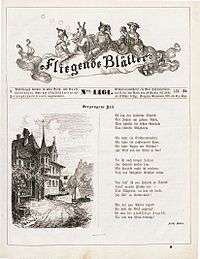
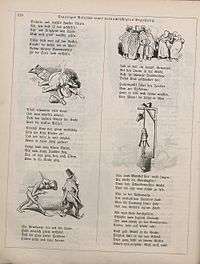
Sample illustrations
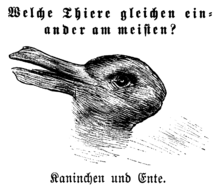 The first known instance of the rabbit–duck illusion, anonymous illustration from the 23 October 1892 issue
The first known instance of the rabbit–duck illusion, anonymous illustration from the 23 October 1892 issue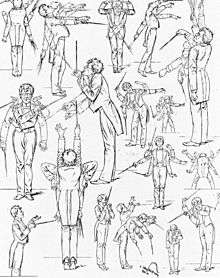 Mahler conducting by Hans Schließmann, 1901
Mahler conducting by Hans Schließmann, 1901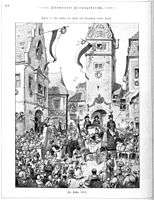 Illustration by Hermann Stockmann, 1903
Illustration by Hermann Stockmann, 1903.jpg) Illustration by Alexander Otrey (1877–1939), 1903
Illustration by Alexander Otrey (1877–1939), 1903
Notes
- Thierry Smolderen, The Origins of Comics: From William Hogarth to Winsor McCay, University Press of Mississippi, 2014, p. 114.
- Levy, Richard S. (2005). Antisemitism: A Historical Encyclopedia of Prejudice and Persecution. 1. ABC-CLIO. pp. 230–32. ISBN 9781851094394. Retrieved 22 October 2012.
- "Fliegende Blätter". Harald Fischer Verlag. Archived from the original on 21 September 2011. Retrieved 25 November 2011.
- Koch, Ursula E. (2013). "Fliegende Blätter (1844[sic]–1944)". In Benz, Wolfgang (ed.). Handbuch des Antisemitismus. 6. Walter de Gruyter. p. 201. ISBN 9783110305357.
External links
- Digital collection of the Fliegende Blätter from Heidelberg University
